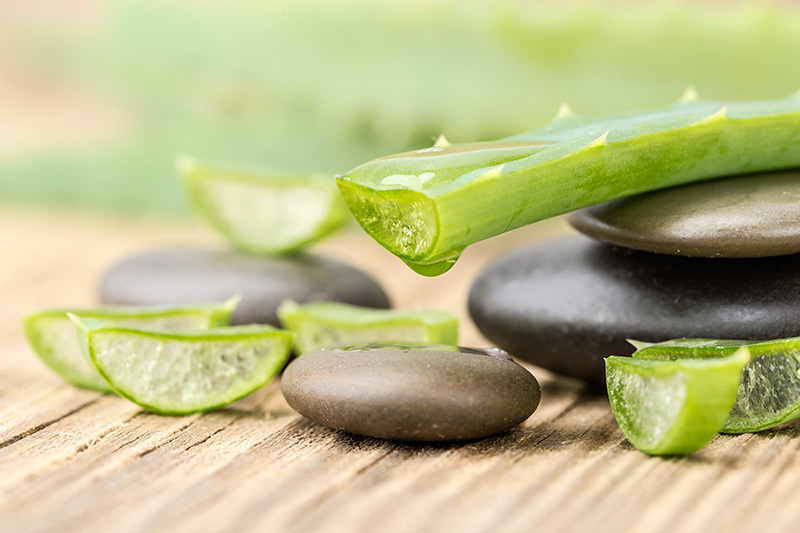Expert Techniques for Extending Poinsettia Life
Posted on 22/08/2025
Expert Techniques for Extending Poinsettia Life
Poinsettias are synonymous with the festive season, their vibrant red, pink, and white bracts adding a touch of color and cheer to homes everywhere. However, most people see their beauty fade soon after the holidays. What if you could keep your poinsettia thriving and beautiful long after the festivities have ended? In this comprehensive guide, we'll reveal expert techniques for extending poinsettia life, ensuring your plant remains a showstopper well into the new year and beyond. Whether you're a seasoned gardener or a curious beginner, these insider tips will keep your poinsettia healthy, lush, and vibrant for months to come.

Understanding Poinsettias: More Than Just a Holiday Plant
Poinsettias (Euphorbia pulcherrima) are native to Mexico and Central America. Contrary to popular belief, these plants are not disposable decorations; with the right care, they can live and even bloom for years. The colored portions often mistaken for flowers are actually bracts - modified leaves that surround the plant's true, tiny yellow blossoms. Knowing how poinsettias grow is the first step to understanding how to maximize their longevity.
Choosing the Right Poinsettia: The Foundation for Longevity
- Select a healthy plant. Choose a poinsettia with vibrant, unblemished bracts, deep green foliage, and no yellowing or wilting. Avoid plants grouped near drafty doors or cold windows in the store.
- Check the roots. Gently lift the plant from its pot to inspect the roots. Healthy roots are white or light tan and fill the pot without being root-bound.
- Inspect the cyathia. The tiny yellow cyathia in the center should be intact. If they are missing or covered in pollen, the plant is near the end of its bloom cycle.
Pro Tip: Transport With Care
Protect poinsettias from cold winds and extreme temperatures when bringing them home. Place the plant in a protective sleeve or plastic bag for transit, and never leave it in a cold car for extended periods.
Ideal Location: Light, Temperature, and Humidity
Poinsettias thrive in conditions that mimic their native tropical environment. Setting your plant up in the right spot is paramount for extending its life and beauty.
- Light: Place your poinsettia in a bright, indirect light location. An east- or west-facing window is ideal. Avoid direct, harsh midday sun, which can scorch the bracts.
- Temperature: Keep daytime temperatures between 65-75?F (18-24?C), and don't allow it to fall below 55?F (13?C) at night. Sudden temperature fluctuations weaken the plant.
- Humidity: Poinsettias prefer moderate humidity. In dry winter climates, increase humidity with a pebble tray filled with water beneath the pot or by using a room humidifier.
- Drafts: Avoid placing your poinsettia near heat sources, radiators, fireplaces, or in the path of cold drafts. Both extremes can cause leaf drop and stress.
Insider Tip:
Mist the foliage lightly in the morning for added humidity. Avoid getting water on the bracts to prevent spotting or fungal issues.
Watering Wisdom: Keep Roots Happy
Watering is where many poinsettia owners go wrong. Too much or too little water leads to root rot or wilted leaves, cutting the plant's life short.
- Check soil moisture. Stick your finger about one inch into the soil. Water only when it feels dry to the touch. Never allow the plant to sit in soggy soil.
- Proper drainage. Remove foil wrappers or decorative pots when watering and let excess water drain away. Empty saucers after watering to prevent root rot.
- Use lukewarm water. Cold water can shock the plant. Use water at room temperature to avoid stress.
- Water less, not more. Poinsettias are susceptible to fungal diseases caused by overwatering. If unsure, err on the side of under-watering.
Expert Technique: Bottom Watering
Set the pot in a shallow dish of water and let the soil absorb moisture for 20-30 minutes. Lift the pot and allow excess to drain before returning it to its display spot. This encourages deep root growth and evenly hydrated soil.
Fertilizing for Long-term Health and Vibrancy
Poinsettias don't require fertilizer while blooming, but as soon as the bracts fade, regular feeding supports continued growth and vitality.
- Wait until after blooming. Begin fertilizing in early spring, about six weeks after the holiday display finishes.
- Use a balanced fertilizer. A water-soluble houseplant formula (such as 20-20-20 or 10-10-10) at half strength works well.
- Apply monthly. Fertilize once a month during the spring and summer. Reduce feeding frequency in autumn as the plant prepares for dormancy.
Fertilizing helps maintain lush, green foliage and encourages vigorous new growth, setting the stage for potential reblooming next holiday season.
Pruning Poinsettias Like a Pro
Pruning is essential to extend the life of your poinsettia and keep it compact and attractive.
- After the holidays: When bracts and leaves start to drop, prune stems back to 4-6 inches above the soil. This encourages strong, healthy new shoots in spring.
- Pinching: In late spring and early summer, pinch back shoot tips when they reach 6 inches, leaving 2-3 leaves per stem. Repeating this encourages bushy, well-branched growth.
- Wear gloves: Poinsettias contain a milky sap that can irritate skin. Protect your hands during pruning.
Tip: Don't Prune After September
Late-season pruning removes next season's flower buds. Time your last pinch to early September.
Repotting and Soil Considerations
Poinsettias outgrow their nursery pots after a season and benefit from fresh soil to maximize lifespan.
- Timing: Repot in early spring after pruning, just before new growth appears.
- Pot size: Move up just one pot size at a time. Oversized pots hold too much moisture, encouraging rot.
- Soil mix: Use a light, well-draining potting mix. Add perlite or sand to promote airflow and drainage.
Repotting refreshes nutrients and gives roots room to expand, promoting robust plant health for an extended poinsettia life.
Encouraging Poinsettias to Rebloom: The Year-Round Cycle
With commitment and proper care, your poinsettia can bloom again next year. Here are the expert techniques for extending poinsettia life and achieving repeat blooms:
- Spring (March-May): Prune back stems to 4-6 inches. Continue regular watering, fertilize monthly, and provide bright indirect light.
- Summer (June-August): Place the plant outdoors in partial shade after the danger of frost has passed. Rotate regularly for even growth. Water and feed as above, pinching new shoots to maintain bushiness.
- Fall (September): Move indoors before nights drop below 55?F (13?C). Continue watering and feeding until late September, then reduce fertilization.
- October-December: Short-Day Treatment
- - Poinsettias need 12-14 hours of total darkness each night for 8-10 weeks to initiate blooming. Each evening, place the plant in a dark closet or cover with a box or black bag.
- - Expose to bright indirect light during the day.
- - Keep temperatures stable; avoid drafts or intense heat.
- - Do not forget even one night of darkness or the plant may not bloom!
After 8-10 weeks of darkness treatment, flower buds should appear. Return the plant to its prominent spot and resume regular care. With this method, you can enjoy a brilliantly colored, reblooming poinsettia each holiday season.
Pest and Disease Management for Long-Lived Poinsettias
Even the best cared-for poinsettias can fall prey to pests or disease if not monitored closely.
Common Issues:
- Whiteflies, spider mites, and aphids are the most frequent pests. Inspect regularly and rinse with water or treat with insecticidal soap at the first sign of trouble.
- Fungal diseases are mostly caused by overwatering or poor air circulation. Remove any affected leaves and adjust your watering technique.
- Leaf Drop: Usually the result of drafts, temperature stress, or dramatic changes in lighting.
Prevention is always best: Keep your plant clean, avoid crowding, and quarantine new plants before introducing them near your prized poinsettia.

Frequently Asked Questions About Extending Poinsettia Life
Can I plant my poinsettia outdoors after the holidays?
*Yes, in USDA zones 9-11, poinsettias make beautiful garden shrubs. Acclimate the plant gradually to outdoor light and plant in a semi-sheltered spot with well-draining soil.*
Why do the leaves turn yellow and fall off?
This is often caused by drafts, inconsistent watering, or lack of light. Ensure stable temperatures, check soil moisture, and place in a well-lit spot away from vents.
Is it difficult to make poinsettias rebloom?
Reblooming requires commitment to regular darkness treatments for eight weeks in autumn. Otherwise, care is similar to any houseplant.
Final Thoughts: A Year of Poinsettia Splendor
Extending poinsettia life is well within reach with expert care and a little extra attention throughout the year. From selecting a healthy plant and optimizing its environment, to precise watering, feeding, pruning, and reblooming techniques, you can dramatically increase the lifespan and vibrancy of your poinsettia.
Start today by following the expert techniques for maximizing poinsettia longevity outlined in this guide, and enjoy your spectacular plant for many celebrations to come!
- Choose healthy poinsettias.
- Provide the right light, temperature, and humidity.
- Master the art of watering.
- Feed and repot as necessary.
- Prune and pinch for optimal shape.
- Commit to the darkness treatment for reblooming.
With patience, knowledge, and these tried-and-true methods, your poinsettia will continue to delight your family and guests as a living symbol of beauty and holiday cheer!
Latest Posts
Radiant Flowers for an Unforgettable Birthday
Unveil the Secrets to Nourishing Cut Flowers
Expert Techniques for Extending Poinsettia Life





